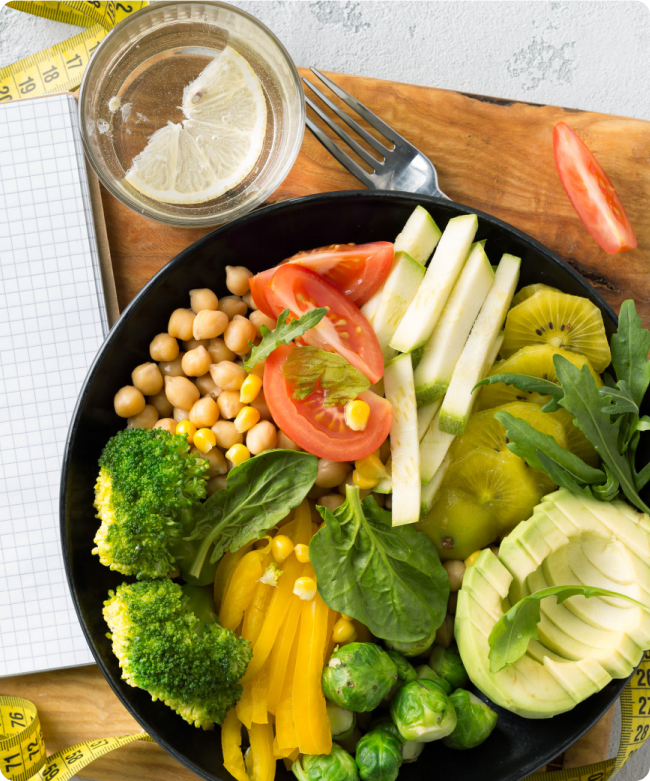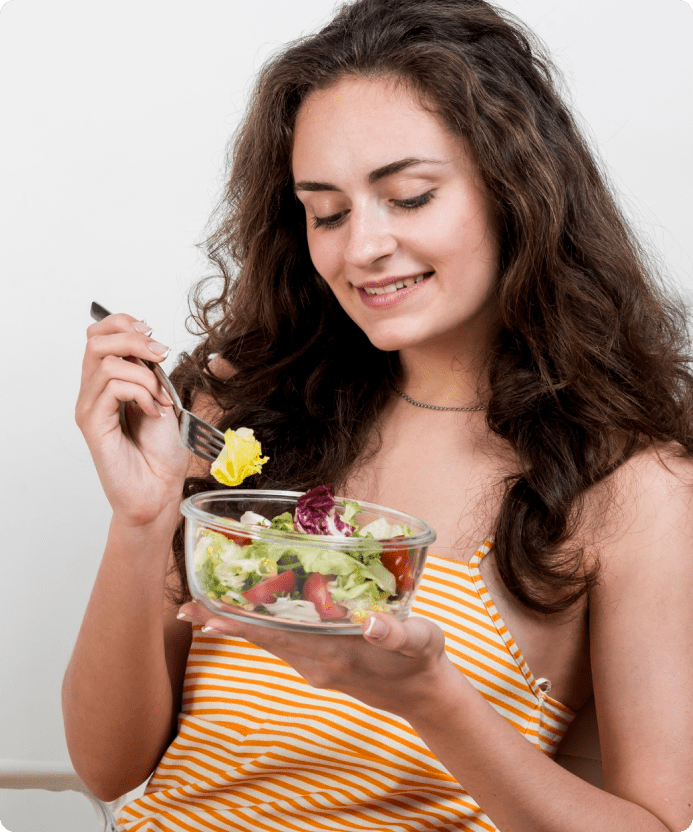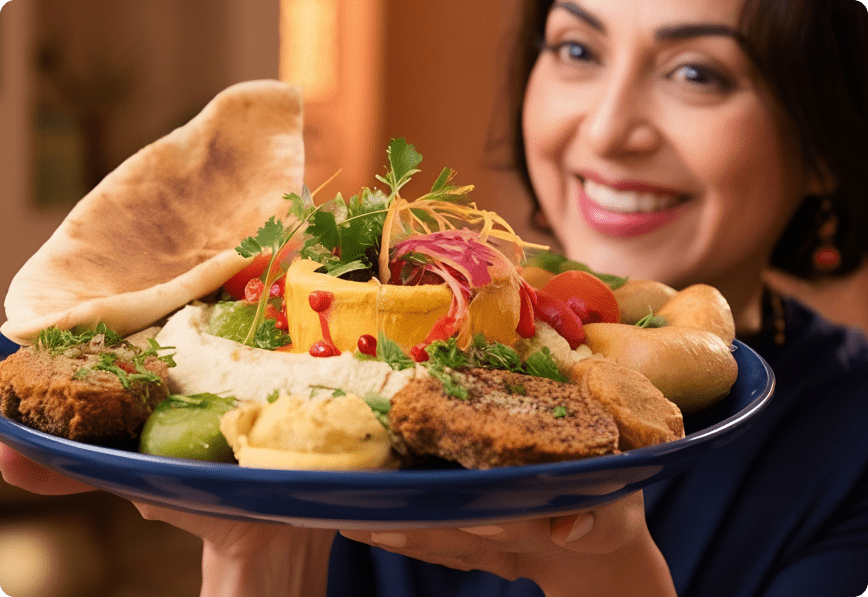Edit Content

Imagine yourself sipping your morning coffee, scrolling through your feed, and wondering why you feel bloated yet again, despite believing you ate healthily yesterday. You are certainly not alone, girl. A significant study conducted and published in The Lancet in 2019 indicates that people eating high-fiber foods were at a 15 to 30 percent lower risk of heart disease, type two diabetes, and even untimely death than those individuals consuming minimal or no fiber. This is not just an impressive finding but a revolutionary one as well.
But here’s the plot twist: most women aren’t even close to eating enough fiber. Most people are supposed to consume 25 grams of fiber every day, but some of us slip far behind. No wonder digestion is sluggish, skin is pale and energy fades in mid-afternoon. Fiber does not require one to just go to the bathroom. It is the silent queen of health—regulating hormones, balancing blood sugar, and making us look healthy on the inside and out.
So, here is an ode to fiber. This is no ordinary food list—it is also a wellness tradition. By the time you read this guide, you will have a list of 30 amazing high-fiber foods (new best friends in your kitchen), ideas of how to incorporate a recipe, snack ideas, and all the support you need to make fiber a natural part of everyday goddess life.
Click here to learn the health benefits of chia seeds!

Think of dietary fiber as the fairy dust in plant-based foods that your body can’t fully digest. Unlike sugar or protein, it doesn’t break down for energy. Instead, it passes through your system, sweeping things clean, keeping digestion smooth, and fueling your gut’s good bacteria.
There are two main types:
And when the two come together? Magic. The tricky part is to combine it with some other fiber-rich food ingredients.
Fiber is like your silent wellness coach, always working behind the scenes. Here’s why every woman needs more of it:
Fiber is therefore your best friend whether you want to lose weight, have high-fiber food, have low-fat high-fiber food, or just want to improve your complexion and energy.

The golden number: at least 25 grams per day for women. But here’s the secret—you don’t need to count obsessively. If your meals are packed with fiber-rich fruits and vegetables, protein and fiber foods, and some fiber-rich snacks, you’ll naturally get there.
Now comes the dreamy part—the food. They are the best fiber-rich foods team. The following list includes the best high-fiber foods that every woman should keep in her pantry, fruit bowl, or handbag.


Fiber should not read like an assignment, babe. Start little, start sweet. Instead of boring rice, you can use cute, decorative tiny pearls of quinoa. Eat fresh apples or pears. Stuff one of those bags of roasted chickpeas into your tote as if it were bubble-like magic. Make yourself a colorful, photo-worthy, and Insta-perfect berry-chia smoothie.
Make your plate work like the way you think of making your wardrobe work: styling is important. Explore with textures, explore colors. Mingle earthy lentils with dreamy spinach and coziness into an oatmeal, almond, and banana swirl. Protein and fiber are not bland—they only wait to be combined and paired up to your radiance.
As far as fiber goes, this can make it all appear a bit more whimsical rather than a dull little bit of kitchen magic. Start your day with a smoothie sorcery—a mixture of spinach, bananas, chia seeds, and almond milk that tastes like a green god. To build a healthy and decently satisfying lunch, create a salad bowl of light quinoa, creamy chickpeas, and roasted Brussels sprouts plus a few pumpkin seeds for the crunch.
Snack time? Have fun and do a little flirt tease with apple slices drizzled with almond butter or crunchy carrot sticks (raw or broiled) dipped in fantastic hummus. And regardless of what time the day wraps up, a thing that can’t be beat is a fuss-free dinner— This comforting lentil curry, served with brown rice and accompanied by roasted cauliflower, serves as a reminder that some things are always good for the soul, much like a hug for your belly.
Get 15+ recipes that include high-fiber food and try to add them to your daily diet!
Go slow, darling. If you jump from zero to hero overnight, bloating will not be your friend. Increase fiber-rich food items little by little, and drink plenty of water.
Too much fiber too quickly = bloating, gas, and tummy rumbles. Balance is key. Pair fiber with enough fluids, and choose a mix of high-fiber vegan foods and other gentle options.
When you have persistent tummy aches, bloating, and other issues, it is likely to be the time to consult your physician. Each woman has her story to tell, and sometimes a condition such as IBS or endometriosis plays the heroic part in it. To listen to your body is not overreacting; it is simply taking care of yourself.
Fiber is not boring—it is gorgeous. Fiber-dense, veggie-based foods like lentils and quality fruits and vegetables like pears and broccoli provide an offering to the blood vessel system and hormone level of every bite. Low-calorie and high-fiber foods, such as cauliflower, contribute to weight loss, and foods high in fiber and protein, such as quinoa, leave you feeling energized.
Whether the diet regimen is based on high protein and high fiber or snacks that are full of fiber or an energy boost, these are the most excellent sources of fiber to liven up the plate. Fiber is about being light, balanced, and radiant, not just digestion.
Your glow-up starts here!
Consider 25 grams a daily affirmation of a love letter to your body—it is the amount that works with most women.
Yes! They don't want you to know that fiber fills you up and stops you from snacking.
Lentils, oats, apples and so on are some of the few superfoods that will ensure your stomach stays off and is happy.
Indeed—when you put it in too fast, it feels like a balloon in the belly. Slow and steady is a pretty strong way.
Enjoy your meals in style by mixing berries into smoothies, keeping roasted chickpeas well-seasoned, or pairing fruits with nut butter.
Yes—and fiber, particularly its soluble (soft, care) kind, practically grows around the cholesterol and physically drifts it off, like a big broom of health.
For the majority, the answer is yes. However, if you have a sensitive stomach due to conditions like IBS, a brief consultation with your doctor can help keep you safe.
Quick Links
Subscribe Our Newlestter
Get daily inspiration, trending stories, and self-care tips crafted for her.